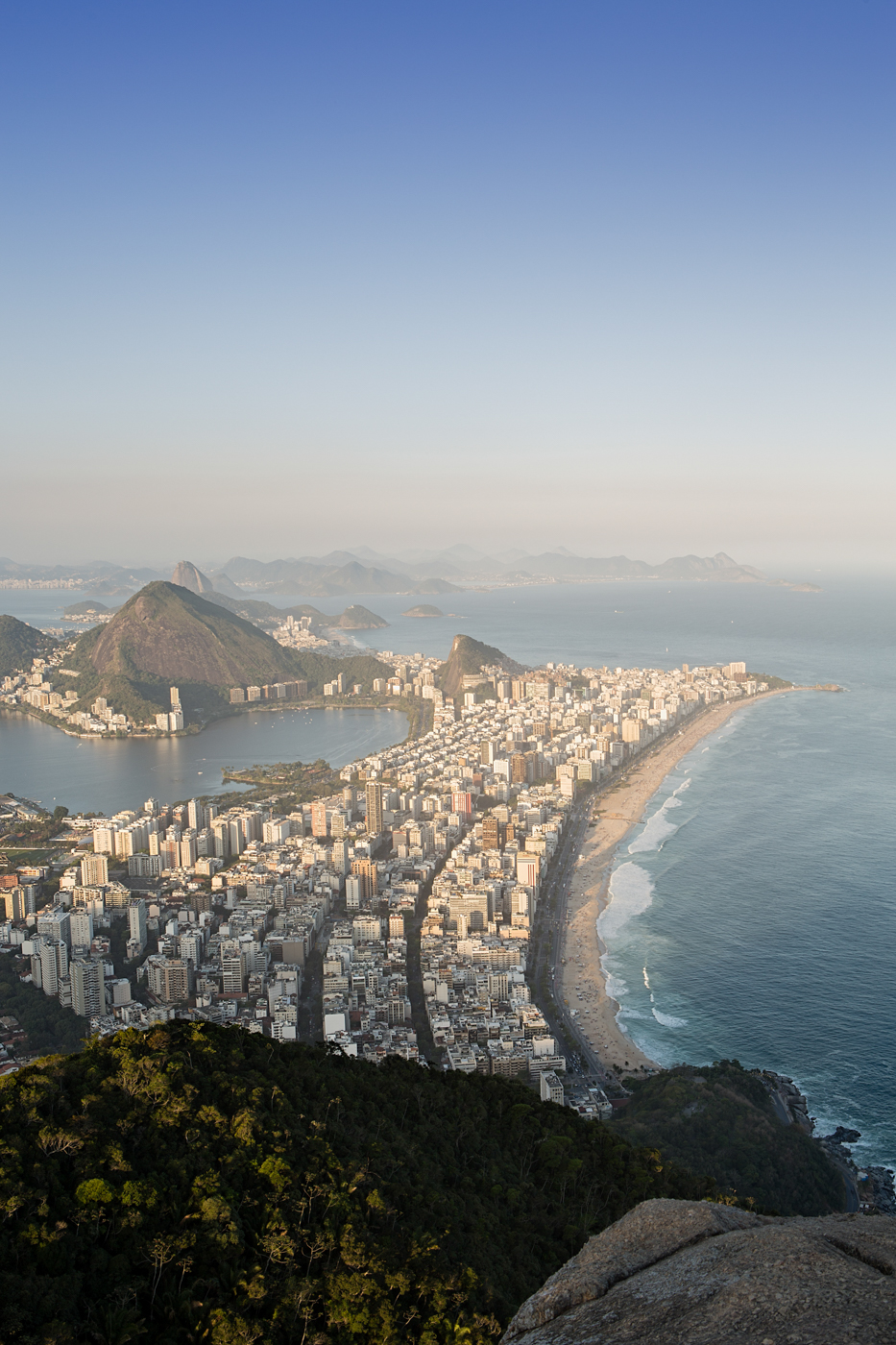Brazil: best views in Rio de Janeiro

According to the locals, after God spent six days creating the world he took his day of rest in Rio. Admiring the views. For nowhere on Earth has better. Rio ripples with low mountains and rounded rocky peaks - sitting above balmy bays and languid lagoons, watching over some of the largest stretches of urban rainforest in the world. The most famous view is from Corcovado – a mountain topped by Christ, arms outstretched over the city. Then there’s the Sugar Loaf, crouching sphinx-like at the mouth of the perfect half-moon of Botafogo Bay. Both are easy to reach - Corcovado on a funicular railway that cuts steeply through the trees, and Sugar Loaf on a spectacular, vertigo-inducing cable car.
 I was in Rio to hike to the most spectacular favela viewpoint of all –the summit of Two Brothers peak – a twin-domed 540 metre high monolith which sits at the end of the Rio’s famous Ipanema beach. Access to the trail is through Vidigal favela and I met my guide Carlos at the gateway to the community – a scruffy huddle of shops clustered at the mouth of the slum’s only road.
I was in Rio to hike to the most spectacular favela viewpoint of all –the summit of Two Brothers peak – a twin-domed 540 metre high monolith which sits at the end of the Rio’s famous Ipanema beach. Access to the trail is through Vidigal favela and I met my guide Carlos at the gateway to the community – a scruffy huddle of shops clustered at the mouth of the slum’s only road.
‘Bem vindo’ he said – ‘welcome’ – offering a warm hug and a motorbike helmet before beckoning me onto the back of a tiny Honda. I climbed on. Carlos revved the engine and we sped up the hill on a sinuous road which snaked steeply - past locals playing dominoes on a makeshift table, a mother washing her baby in an old tin bathtub, a bar adorned with beer advert banners of scantily clad girls. We swerved around a stream of school kids on their way downhill, and an old man dragging a cart laden with cardboard. And after 10 minutes we pulled up at a basket ball court where a lively group of teenaged boys and girls were playing a game of football with impossible deftness and dexterity.
Carlos pointed ahead – to a dirt trail which disappeared into a dark hole in a thick wall of forest behind the court, and we left the bike and the ragged urbanity of the favela and walked into another world.
Toucans flitted through the trees. A Morpho butterfly floated past, its electric blue wings luminously bright in the low, lambent light. After a few hundred metres the trail wound around a corner and began to climb sharply – rising over ragged rocks and exposed roots, winding up the hill. For half an hour we climbed, the sweat rising, calves and thighs aching with the incline. I took water at a bend in the path where the trees thinned - offering a view out over a plunging valley and a tumble of bric-a-brac houses so far away they looked like a spilt pile of brown sugar cubes.
‘That’s Rocinha favela’, Carlos told me, ‘Vidigal’s great rival and Rio’s biggest favela’. Snipers would once crouch here where we swigged water from our bottles, to take pot shots. It was a chilling thought. The forest seemed so tranquil. So far from a place of death. We climbed once more, through dense trees which thinned into low bushes and finally a grassy slope. The trail became a red ribbon on the green – wisping towards the grey hulk of the Two Brothers rocks.
It was a further half hour to the peak itself – a gentle slope which led to a smooth granite platform and a jaw-dropping view. Behind us the sun was sinking low – silhouetting the table-top summit of the Pedra da Gavea and catching the wings of hang-gliders which soared over the tiny skyscrapers of São Conrado. Ipanema lay at our feet - a sweep of sugary sand lapped by a bottle-green sea - which ran to a rocky cape. Copacabana stretched beyond. As the sun sank the city lights twinkled-on – a grid of neon and argon glittering and making a shimmering reflection in the still waters of the Rodrigo de Freitas lake. The dark slopes of Rio’s mountains rose behind to Christ, brilliant white in the fading light. We stood transfixed for half an hour as the light faded orange into violet, violet into peacock blue. Then Carlos handed me a torch and we stepped back onto the trail and walked into velvety night.
The author, Alex Robinson, is an award-winning writer and photographer. He regularly writes for Footprint guides, Wanderlust magazine and The Sunday Times Travel Magazine.
All images are credited to Alex Robinson.
Tailor-made holidays
Flexible, custom-made holidays to Latin America created to match your exact requirements: our tailor-made itineraries are as unique as the clients for whom they are designed.
Design my trip


























